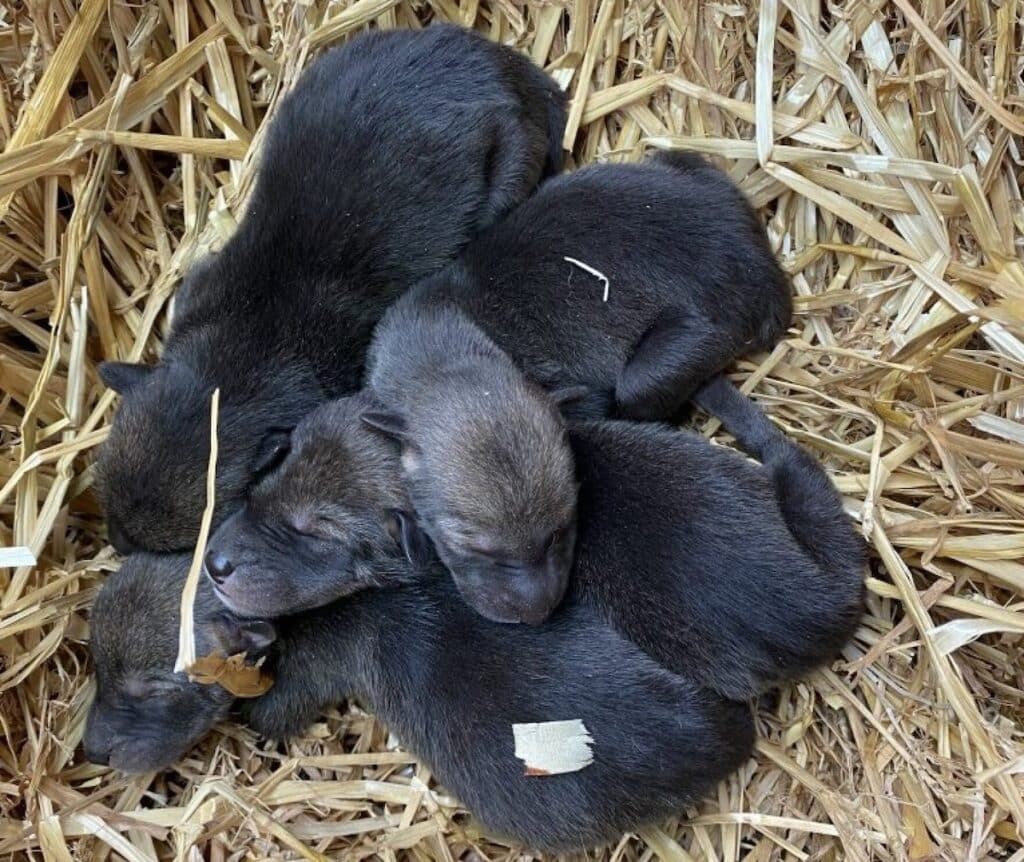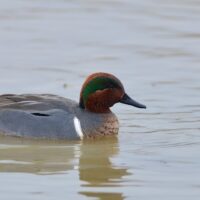With only a little more than 250 red wolves in the world, births aren’t all that common and are usually planned, but at Land Between the Lakes National Recreation Area in far Western Kentucky, 12-year-old Jasper defied expectations to become the oldest breeding red wolf on record.
He and mate Ember became parents to four bouncing baby pups in late April.
LBL’s lead naturalist John Pollpeter says red wolves used to be at the top of the food chain across the American South – though they could be found as far west as Texas – and were a familiar sight to residents before the late 1800s. The species is endemic to the region, meaning it could only be found there.
“The red wolf is purely American, but also purely only Southern. They used to be the dominant predator here at Land Between the Lakes, in Kentucky and Tennessee,” he said. “Daniel Boone, Davy Crockett and John James Audubon, when they were painting or writing about a wolf, they were writing about the red wolf.”

Red wolves are the most endangered canid in the world. With only around 20 known specimens in the wild, most are in captivity at facilities across the country.
The species was declared extinct in the wild in 1980. With distinctive reddish colored fur on its neck and legs, a typical adult red wolf is around four feet long from tip to tail and weighs about 80 pounds, a little bigger than a German Shepherd.
DeLene Beeland wrote a book about red wolves hoping it would spark more conversation about saving the country’s only native wolf species. Beeland says widespread extermination campaigns, some led by the U.S. government, and habitat loss were the biggest contributors to the species’ population decline. The species lost more of its historical territory — 99.7 percent — than any other large carnivore. That includes lions, tigers and snow leopards.
“There was a lot of ad hoc pressure on the red wolf, before the government predatory campaigns really began. American settlers probably had a lot to do with it,” she said. “There were a lot of ad hoc bounties in the settlement period, for example, that encouraged people to kill mountain lions that used to be in the [eastern United States] and bobcats and wolves.”
Some experts, like Red Wolf Species Survival Plan coordinator Chris Lasher, link past attitudes towards the red wolf directly to European fairy tales.
“They thought that based on all those old stories that we hear like Little Red Riding Hood and the Three Little Pigs and those type of things, that the red wolf was an evil animal that was going to, you know, attack children and attack pets and kill their livestock. And there’s nothing further from the truth.”
Lasher works at the North Carolina Zoo in Asheboro. He coordinates with scientists and naturalists across the country to plan red wolf breeding programs and repopulation efforts.
North Carolina is the home of the only wild population of red wolves since wildlife managers with the Red Wolf Recovery Program — which is coordinated by the U.S. Fish and Wildlife Service – started rereleasing them there in 1987.
Beeland thinks the name should be changed to the American Red Wolf.
“Most people know, gray wolves are European species that crossed into North America in what we call a biological invasion … but they didn’t evolve here. And I think that’s a really important distinction. You know, this is America’s Red Wolf, and we need to save it.”
To release more red wolves into the wild, Lasher says more genetic diversity and a bigger population base are needed. That means more wolves in captivity at places like zoos and recreation areas.
“We need a minimum of 330 animals under human care to be able to provide animals to multiple recovery locations,” he said. “Right now, we only have space for about 260 animals under human care.”
Pollpeter says the pups born at LBL will stay with their parents and siblings for at least 18 months. He hopes to hold a naming contest for the young wolves this fall on social media.
After that time, Pollpeter says, the wolves will likely be transferred to a zoo to be a part of a breeding program or begin training for release into the wilds of North Carolina.
This story was featured on NPR’s “All Things Considered” on July 7.






